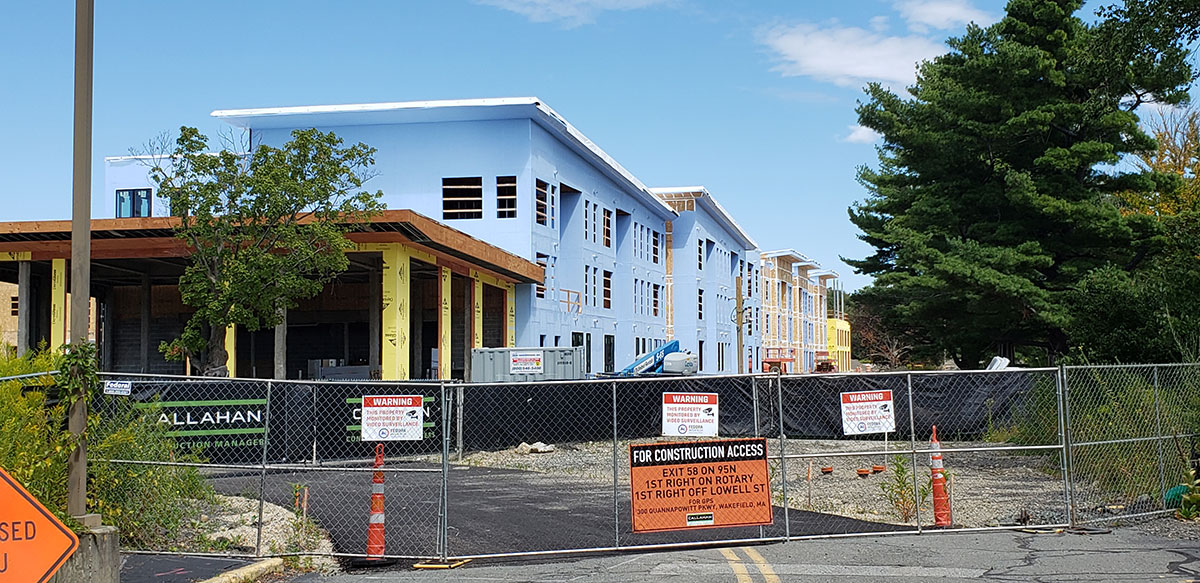
CABOT, CABOT & FORBES and its partners Equity Residential report that residents will be able to begin moving into their development on the lake sometime next year. The Basin will consist of 440 multifamily residential units, including 79 privately subsidized affordable units which were recently authorized by the Town Council, which would enable Wakefield to get credit for adding to its subsidized housing inventory. (Frank Conte Photo)
By MARK SARDELLA
WAKEFIELD – The Town Council last night voted to formally authorize the chairman to sign regulatory agreements with the state Executive Office of Housing and Livable Communities (EOHLC). The immediate effect is that the town will get credit for 79 affordable housing units on Quannapowitt Parkway.
The vote was a formality brought about by a legal wrinkle regarding the land at the head of the Lake currently being developed by Cabot Cabot & Forbes.
Town Administrator Stephen P. Maio explained that the town routinely enters into such regulatory agreements with the EOHLC with respect to Chapter 40B housing developments and inclusionary zoning projects. The town needs to sign off on such agreements so that it can get credit for the affordable units on its subsidized housing inventory.
The project at the head of the Lake is not a 40B, but it does fall under the town’s inclusionary zoning bylaw, which requires 18 percent of the units to be designated as affordable under the state’s guidelines. The purpose of the bylaw is to increase Wakefield’s affordable housing stock and enable Wakefield to get to 10 percent affordable housing in town. Once the town hits that mark, it will have more control over future 40B projects.
The issue with the project at the head of the Lake, Maio said, is that a portion of the 200-400 Quannapowitt Parkway property is “registered land.” He explained that at some point in the long history of the property, somebody petitioned the court to declare who the title owner of the property was, and what, if any, legal incumbrances were on the title, such as easements, restrictions, etc.
Maio said that when the town went to record the regulatory agreement for the project at the head of the Lake, the court said that, because a portion of the site is registered land, they would, in this instance, like a formal vote of the Town Council to authorize the chairman to sign the agreement.
Maio said that Town Counsel Thomas Mullen had drafted the agreement for Chairman Michael McLane to sign so that the town can get credit for the 79 affordable units that will be included in the 440-unit development.
Mullen elaborated that either all members of the Town Council could sign the agreement, or the Town Council could vote to authorize the chairman to sign.
“This just formalizes past practice and makes sense,” Mullen said.
Town Councilor Edward Dombroski made a motion to authorize the chairman of the Town Council to sign regulatory agreements with EOHLC.
Town Councilor Douglas Butler asked if the vote would also authorize the chairman to sign future regulatory agreements.
Mullen said that the whole idea was to avoid the need to have the Town Council vote on every agreement. He said that the chairman could not sign such an agreement without the knowledge of the full board.
The Town Council voted 7-0 to authorize the chairman to sign regulatory agreements with the EOHLC.




